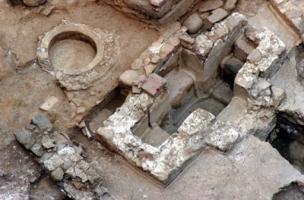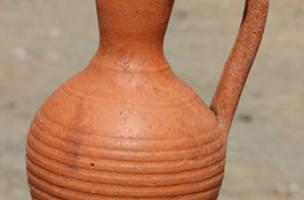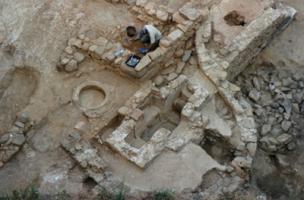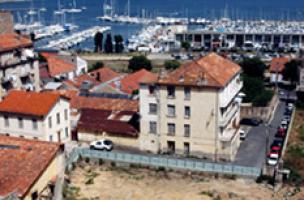You are here
Discovery of an Early Christian Baptistery in Ajaccio
The remains of the Early Christian baptistery of Ajaccio's first cathedral have just been revealed by a team from the Institut national de recherches archéologiques préventives (Inrap).
The beginnings of Christian Corsica
The Early Christian baptistery
The excavation of an important rubbish pit, associated with this complex, has led to the collection of almost 5,000 potsherds. The diversity of their provenance shows that the site was, in the 6th and 7thcenturies, and perhaps still in the 8th century of our era, fully integrated into the Mediterranean commercial network.
The medieval cemetery
Several ceramic tiles used for the construction of tombs were incised before firing (knots, door crowned with a half sun, cross) and above all inscriptions whose meaning has yet to be determined. The skeletons are in a good state of conservation. First observations show that the majority of those buried here were young (between approximately sixteen and forty years of age) and that there was a fairly equal proportion of men and women.
What preventive archaeology brings to our knowledge of the Early Christian period
The Ajaccio site completes our knowledge of other Corsican baptismal complexes of the same period, such as those of Mariana, Sagone, Bravone and Rescamone. In four years, preventive archaeology has completely renewed research, on the pivotal period between the end of Antiquity and the beginning of the Middle Ages. Inrap archaeologists have excavated four Early Christian basilicas whose dates vary between the 4th and 5th centuries in Arles and Marseille (Bouches-du-Rhône), Rezé (Loire-Atlantique), Roanne (Loire).
Ajaccio, fouille Alban, 2005.

Ajaccio, fouille Alban, 2005.

Ajaccio, fouille Alban, 2005.

Ajaccio, fouille Alban, 2005.

Ajaccio, fouille Alban, 2005.

Ajaccio, fouille Alban, 2005.

Ajaccio, fouille Alban, 2005.
Mahaut Tyrrell
Media communication
Inrap, media partnerships and relations
+33 6 07 40 59 77
mahaut.tyrrell [at] inrap.fr

